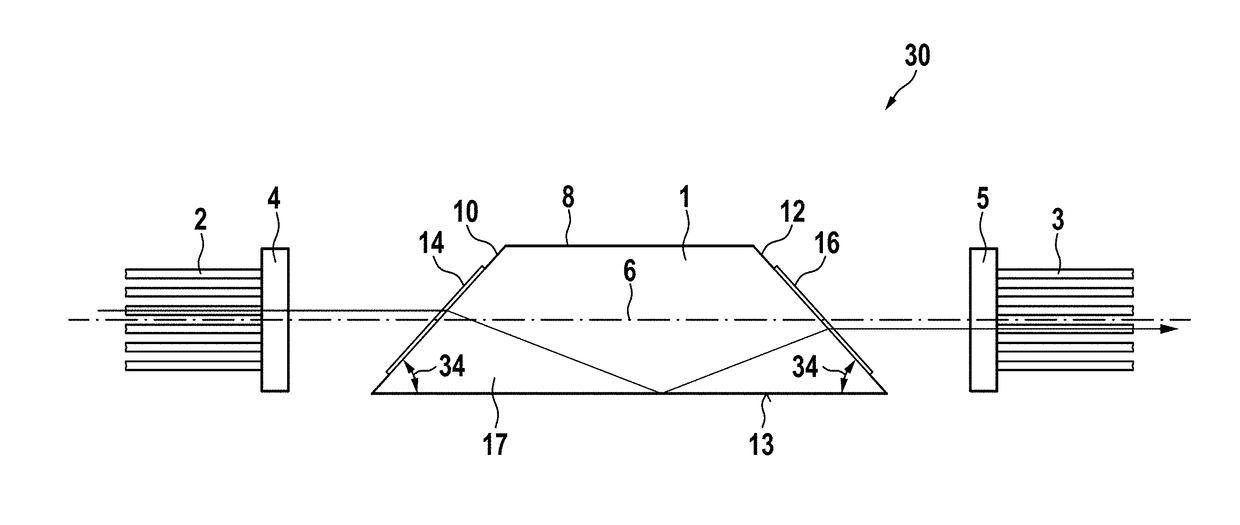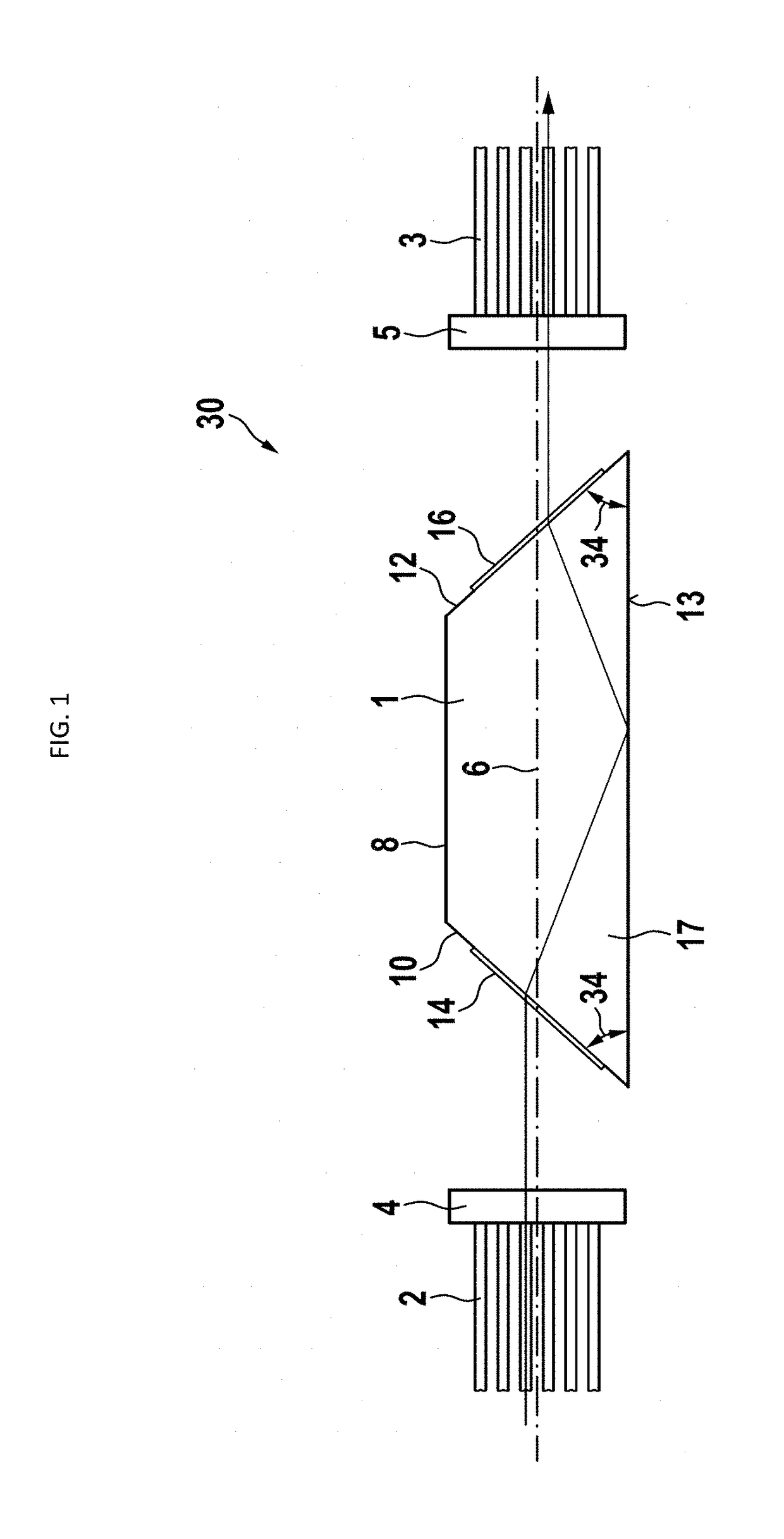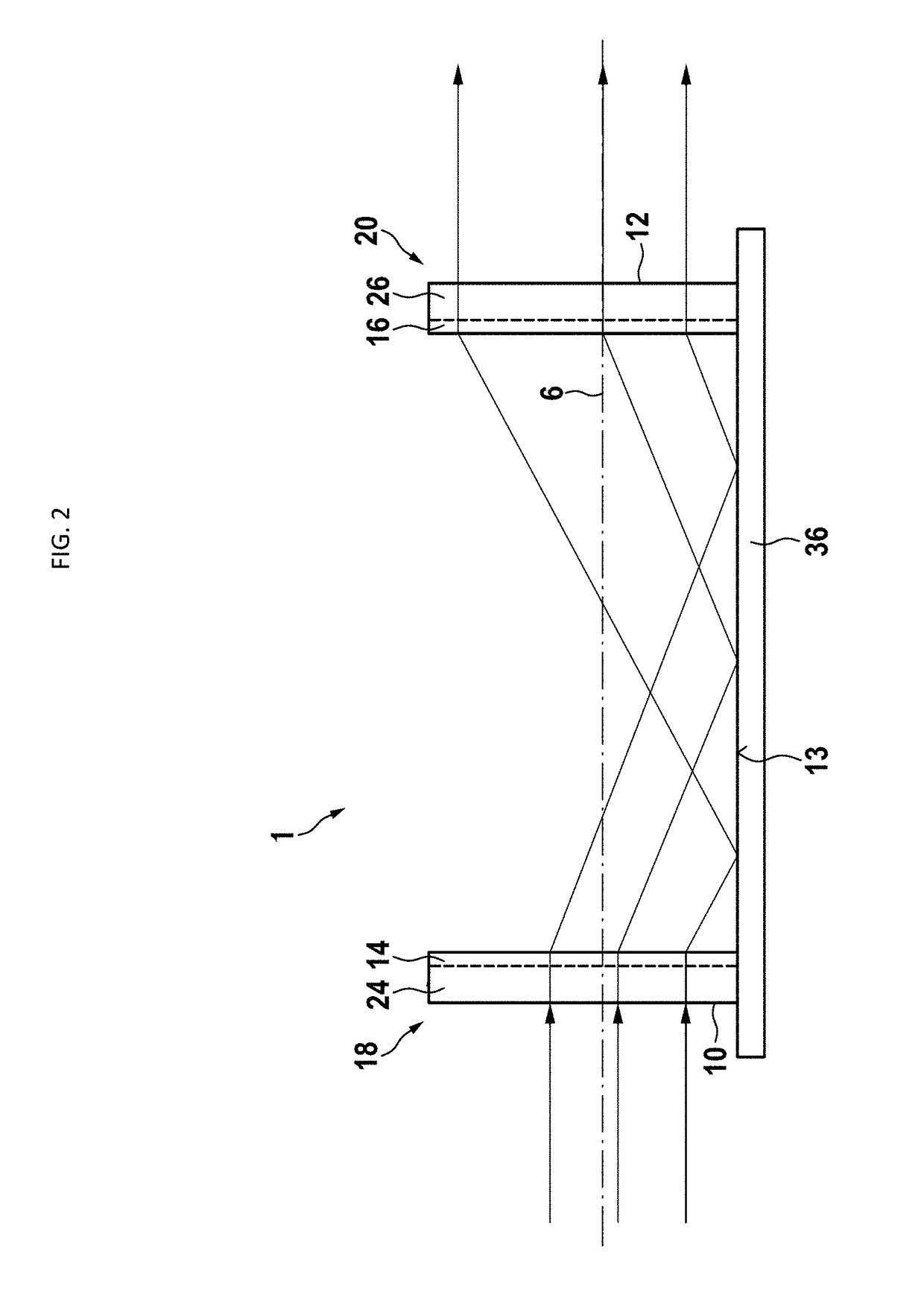Multichannel fiber optic rotary joint (FORJ) having an achromatic metasurface
a multi-channel fiber optic and metasurface technology, applied in the field of optical rotary joints, can solve the problems of relatively small return loss, relatively strong reflection of transmitted light inside the rotary joints, and relatively small return loss
- Summary
- Abstract
- Description
- Claims
- Application Information
AI Technical Summary
Benefits of technology
Problems solved by technology
Method used
Image
Examples
Embodiment Construction
[0055]FIG. 1 shows an optical rotary joint 30 having a first collimator arrangement 4 for coupling on first light waveguides 2 and a second collimator arrangement 5 for coupling on second light waveguides 3. A Dove prism 8 is arranged between the first collimator arrangement 4 and the second collimator arrangement 5 as a derotating optical element 1. The distance from the Dove prism 8 to the first collimator arrangement 4 is preferably the same as from the Dove prism 8 to the second collimator arrangement 5. As the optical rotary joint 30 may be working bidirectional, light may be coupled out of the first light waveguides 2 of the first collimator arrangement 4 through the Dove prism 8 and into the second light waveguides 3 of the second collimator arrangement 5 and vice versa. As said above, the Dove prism 8 is preferably rotated at half the angular speed of the relative rotational speed difference between the first collimator arrangement and the second collimator arrangement. The ...
PUM
 Login to View More
Login to View More Abstract
Description
Claims
Application Information
 Login to View More
Login to View More - R&D
- Intellectual Property
- Life Sciences
- Materials
- Tech Scout
- Unparalleled Data Quality
- Higher Quality Content
- 60% Fewer Hallucinations
Browse by: Latest US Patents, China's latest patents, Technical Efficacy Thesaurus, Application Domain, Technology Topic, Popular Technical Reports.
© 2025 PatSnap. All rights reserved.Legal|Privacy policy|Modern Slavery Act Transparency Statement|Sitemap|About US| Contact US: help@patsnap.com



